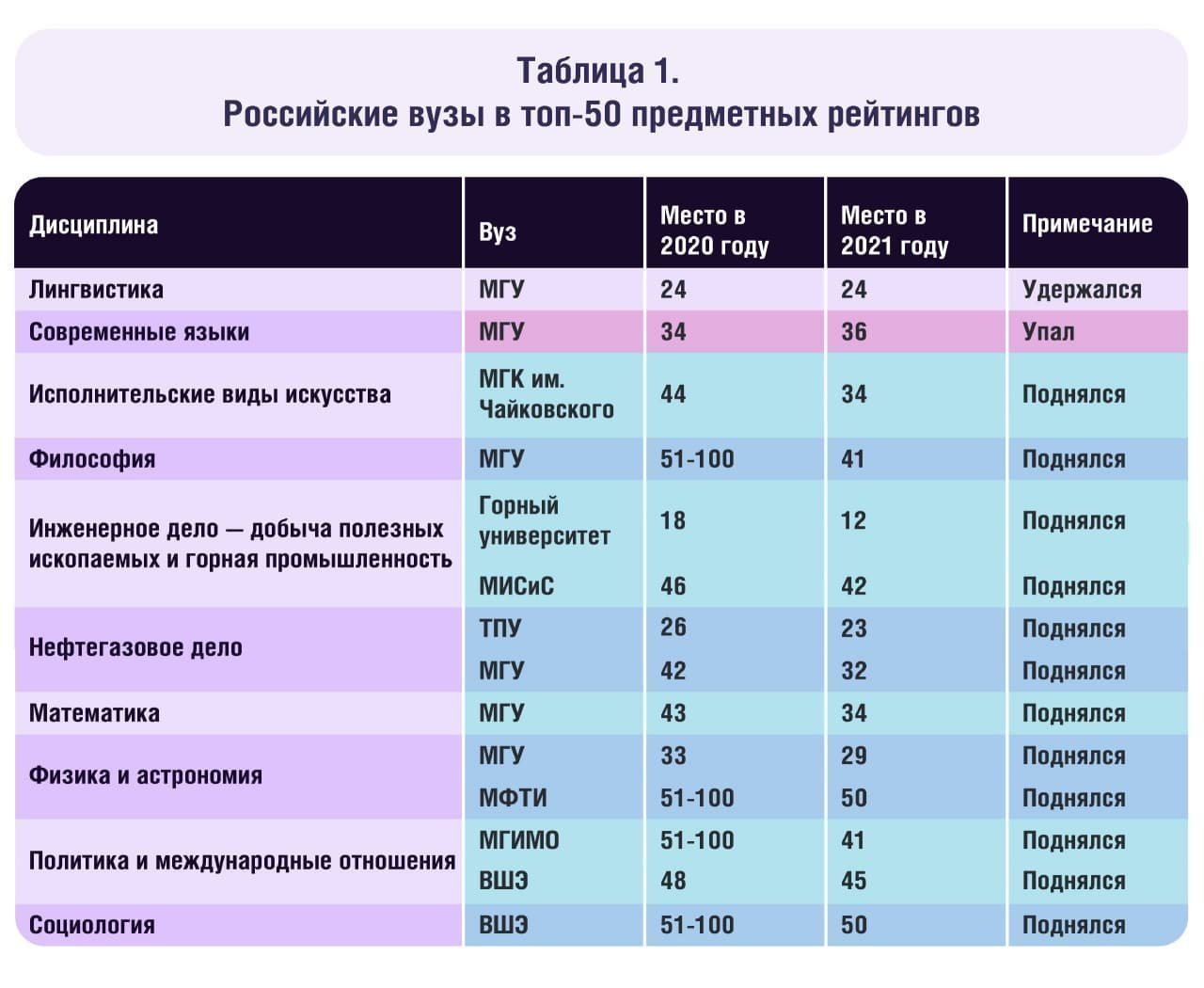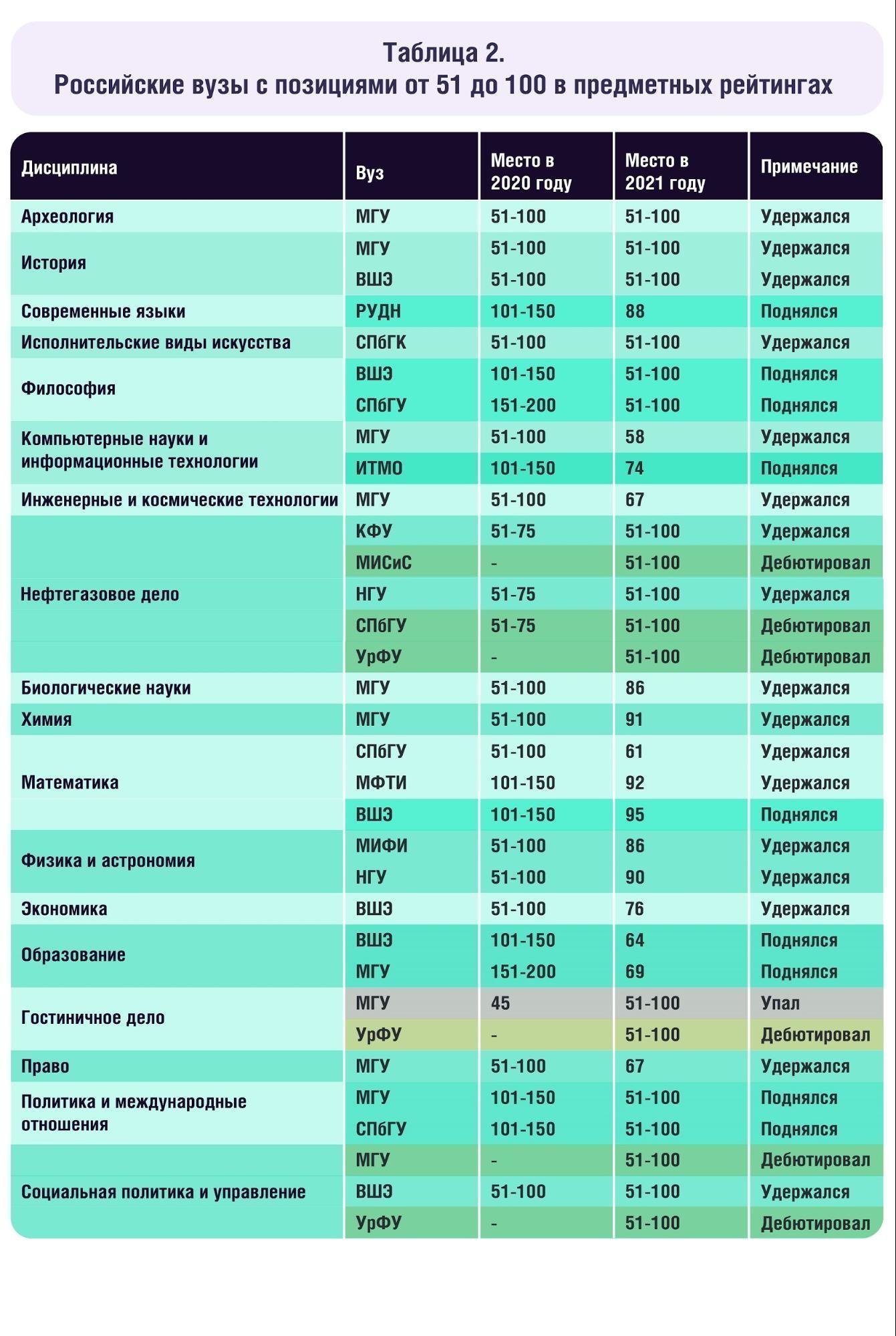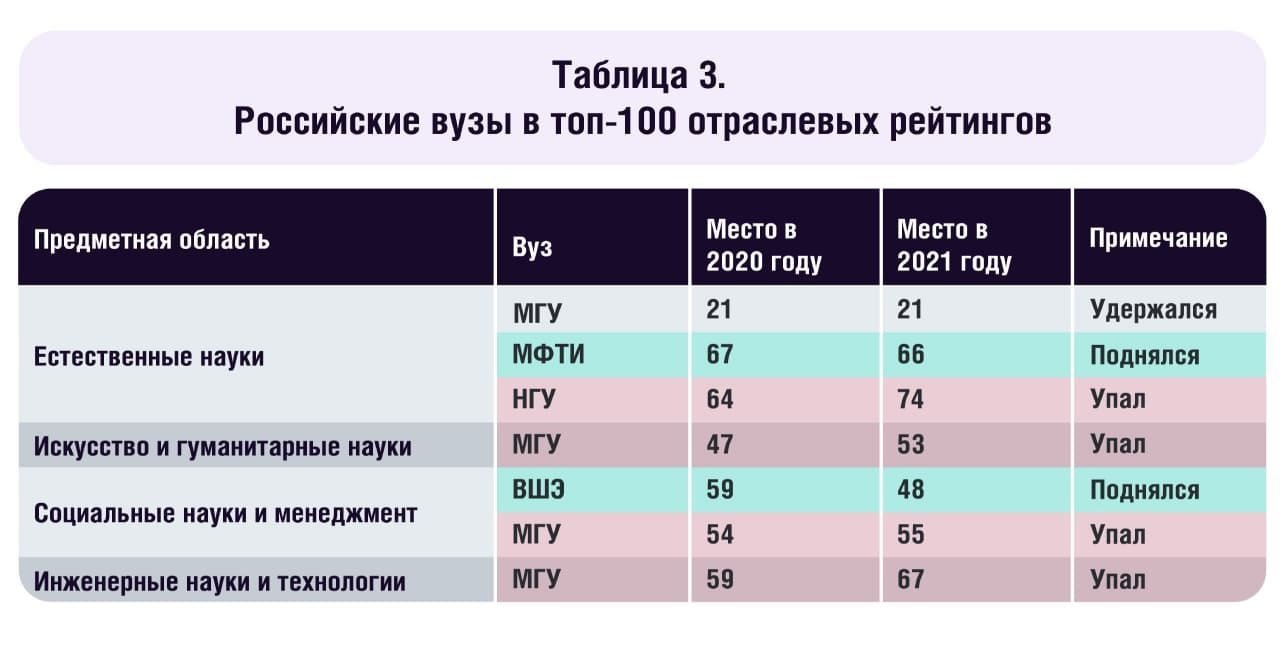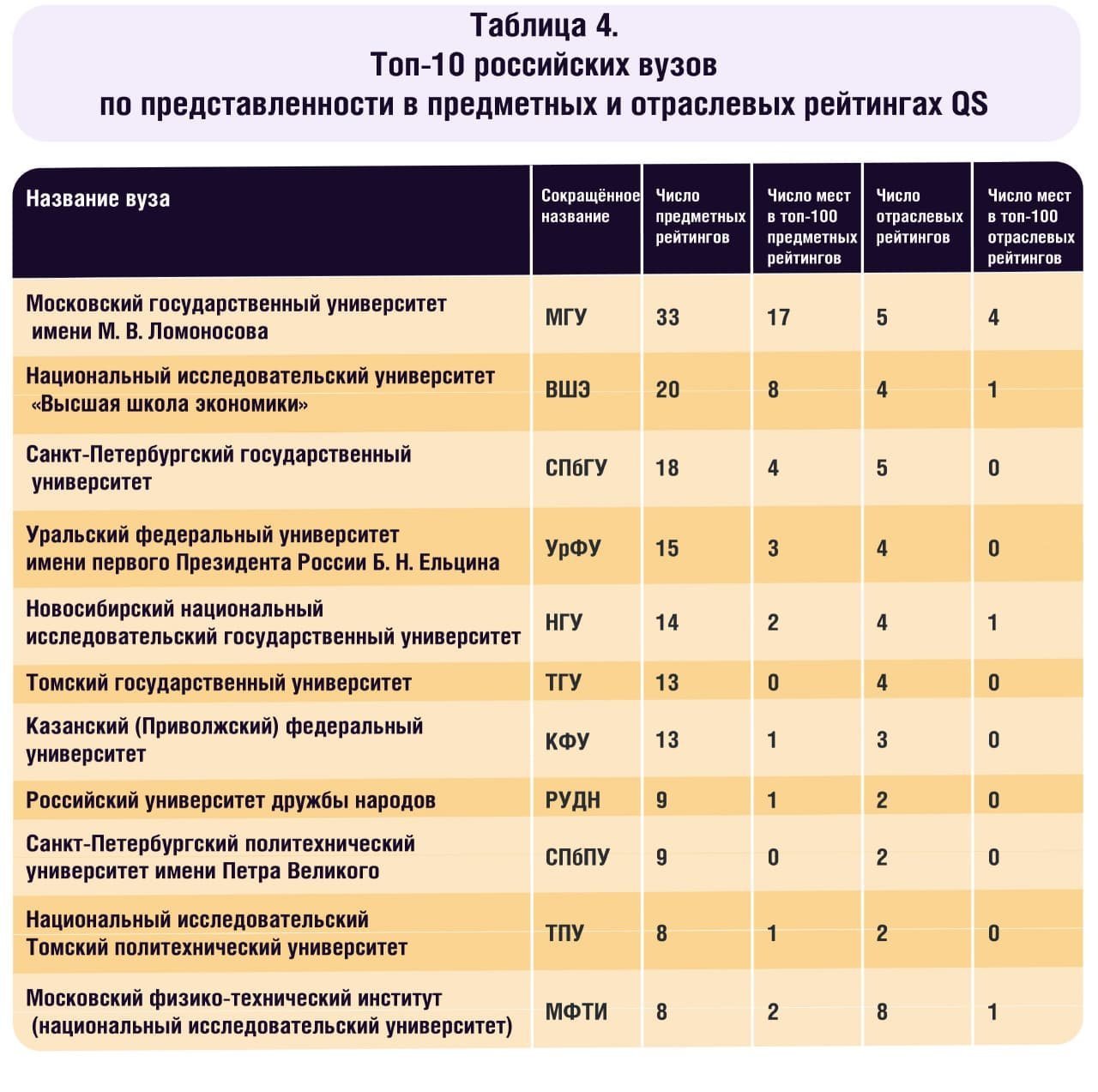Out now: qs world university rankings 2020
Содержание:
- Academic reputation
- В-третьих: ну и что всё это значит?
- Why isn’t my university featured in the world university rankings?
- Top Universities in Asia
- Россия: основные факты и результаты
- Top Universities in Europe
- Top Universities in the US and Canada
- How are the subject rankings calculated?
- Во-вторых: каковы результаты российских вузов в рейтингах этого года?
- Рейтинг вузов России в мире в 2021 году
- Available programs
- How are universities assessed?
- Особые рейтинги
- What makes a university eligible to be considered?
- Are the world university rankings biased towards English-speaking universities?
- Faculty: student ratio
- Why are universities sometimes listed in a different order in other ranking tables?
- What are the big changes since last year’s rankings?
- I can see that this university is ranked 501-510. What is its exact ranking?
- How much importance should I place on rankings when choosing a university?
- International faculty and international students
- Citations per faculty
- Employer reputation
- What do the best universities have in common?
Academic reputation
Eight universities have all scored a perfect 100 for academic reputation in this year’s ranking, a measure of how the institution is perceived by other academics. Five of these are listed in the overall top 10 above (MIT, Stanford, Harvard, Oxford and Cambridge) but the other three are worth focusing on briefly.
The University of Tokyo is up one place to joint 22nd this year and continues to be the top university in Japan. Only three other institutions from Asia are ranked above Tokyo this year, cementing its reputation as one of the best places to attend university in the continent.
Our other two faultless universities with academics are not only both based in the US, they’re both based in California. The University of California, Berkeley (UCB) and the University of California, Los Angeles (UCLA) have both fallen in overall rank this year but continue to enjoy a healthy academic reputation, having also scored 100 for this indicator last year.
В-третьих: ну и что всё это значит?
Университеты из России вошли уже в первые предметные и отраслевые рейтинги QS в 2011 году, но их позиции росли медленно. Например, в 2013 году в топ-100 по отдельным дисциплинам входил только МГУ. Сейчас в первую сотню предметных рейтингов прошли 16 вузов. Это действительно рекорд, и важную роль в таком результате сыграл проект повышения конкурентоспособности российских университетов «5-100», который совсем недавно попал под лавину критики.
Как заявил ректор ВШЭ Ярослав Кузьминов на брифинге по результатам предметного рейтинга QS, можно считать, что проект выполнил поставленную правительством задачу.
Но изначально вхождение в предметные рейтинги не было целью Проекта 5-100. В президентском указе 2012 года говорилось, что к 2020 году не менее пяти российских университетов должны войти в первую сотню ведущих мировых университетов. В первую сотню вообще, то есть в институциональных рейтингах.
Этой цели не добился ни один из 21 вуза-участника Проекта 5-100. В первые сотни мировых рейтингов QS и ARWU вошёл только МГУ, который не получал поддержки по этой госпрограмме.
Стоит ли результат усилий
Предметные рейтинги, конечно, выглядят помельче, чем институциональные, но тоже важны. В своих дисциплинах они играют роль рекламной витрины для абитуриентов и учёных, которых хотели бы привлечь вузы. По идее, участие в рейтингах помогает университетам продвинуться в тех самых направлениях, по которым их и оценивают, — то есть привлечь зарубежных студентов и талантливых сотрудников, повысить качество образования и исследований.
Недавняя проверка Счётной палаты показала, что как минимум часть из этих эффектов российские университеты от своего активного участия в мировых рейтингах получили. Участники Проекта 5-100 стали публиковать больше научных статей в престижных международных журналах, активнее позиционировать себя за рубежом, привлекать лучших абитуриентов и иностранных учёных.
Эта международная активность и повлияла на продвижение в рейтингах по отдельным дисциплинам.
Каких результатов российских вузов в рейтингах ждать дальше
Общие затраты бюджета на Проект 5-100 составили порядка 80 млрд рублей. И похоже, власти невысоко оценивают эффективность вложений в международное продвижение вузов.
В новой российской программе академического превосходства «Приоритет 2030», как рассказал министр науки и высшего образования Валерий Фальков, роль рейтингов будет пересмотрена. Вузы обяжут работать больше над внутренними изменениями, чем над продвижением в мировые топ-100. Утвердить новую программу должны в ближайшее время.
Есть вероятность, что в эпоху «Приоритета 2030» российские вузы станут уделять меньше внимания международным рейтингам, сосредоточившись на другом, и высокие позиции этого года будут потеряны. К такому развитию событий может привести и принятие законопроекта о просветительской деятельности, если он обяжет вузы получать специальное разрешение Минобрнауки для международного сотрудничества.
Why isn’t my university featured in the world university rankings?
There are tens of thousands of universities in the world and unfortunately, it’s simply not possible to rank every single one of them. It’s important to remember that even making it to the lowest level of the world university rankings is a great achievement, putting an institution within the top two to five percent worldwide. If an institution isn’t featured, this doesn’t mean it’s ‘bad’ – it just isn’t within this very top tier.
If you’re confused by the exclusion of a particularly prestigious institution, it may be that the university isn’t eligible for inclusion in the rankings, due to being too specialized, only teaching at one level, or not producing enough highly cited research (see above). Many of the schools that don’t feature in the overall world university rankings do get a chance to shine in the regional rankings and/or the subject rankings. For example, QS’s includes many specialized schools that are not eligible for inclusion in the overall rankings, but which excel in this particular field.
Top Universities in Asia

305 Asian schools are found in the QS World University Rankings this year.
The highest ranked university is found in Singapore in Southeast Asia: the National University of Singapore (NUS), placing in 11th place worldwide and earning its highest score in the academic reputation indicator.
Southeast Asia claims a total of 60 universities this year. Malaysia has the most ranked schools in Southeast Asia with 22; followed by Indonesia with 16.
Most of Asia’s universities are in East Asia, where 179 universities can be found. Mainland China’s performs the best, ranking in 17th.
South Asia claims 52 schools and is dominated by Indian institutions. Of these, India’s Indian Institute of Technology Bombay (IITB) earns the highest score, in joint 177th globally.
Lastly, Central Asia has 14 entries. Its highest ranked university is Kazakhstan’s in 175th.
Россия: основные факты и результаты
- Московский государственный университет им. М.В. Ломоносова поднялся в рейтинге в первую очередь благодаря растущей репутации в мировом академическом сообществе. В настоящее время он достигает 71-го места в мире по показателю рейтинга QS «Академическая репутация», который учитывает отзывы 102,000 представителей академического сообщества по всему миру. В прошлом году он занял 77-е место в мире по этому показателю;
- Четыре российских вуза вошли в ТОП 250 лучших в мире университетов, включая Томский государственный университет, поднявшийся с 268 на 250 место. Это также исторически лучший результат Томского государственного университета в рейтинге QSWorldUniversityRankings;
- В этом году в рейтинг вошли четыре новых российских участника. Вернулся Алтайский государственный университет и впервые вошли Санкт-Петербургский электротехнический университет ЛЭТИ, Российская академия народного хозяйства и государственной службы при Президенте РФ и Пермский государственный университет;
- Показатель QS «Соотношение студентов к преподавателям» измеряет вероятный средний размер класса в каждом университете и служит косвенным показателем для оценки качества обучения в вузах. В этом году 13 из 28 российских вузов получили более низкий балл по этому показателю по сравнениюс 2019 годом. Девять университетов улучшили свои позиции по этому показателю по сравнению с прошлым годом;
- 12 из 100 лучших в мире университетов по показателю «Соотношение студентов к преподавателям» являются российскими учебными заведениями;
- Показатель «Индекс цитируемости» измеряет научный вклад университета, подсчитывая среднее количество цитирований, полученных вузом за пятилетний период. На первом меcте среди россиян по индексу цитирования в этом году Новосибирский государственный университет, улучшивший свои позиции по сравнению с прошлым годом на 20 мест. К сожалению, 19 из 28 вошедших в рейтинг университетов получили более низкий, чем в прошлом году, балл по этому показателю;
- По данным 102,000 ученых, опрошенных QS, лучшим российским университетом является Московский государственный университет им. М. В. Ломоносова, который занял 71-е место в мире — 77,3 балла из 100 — по показателю «Академическая репутация». Самый высокий рост по этому показателю продемонстрировал университет РУДН, поднявшись на 138 мест по сравнению с прошлым годом;
- По данным 51,000 работодателей, опрошенных QS, лучших выпускников России также выпускает Московский государственный университет им. М. В. Ломоносова, который занимает 68-е место в мире по показателю QS «Репутация среди работодателей». И снова РУДН показывает самую высокую динамику роста — на 112 мест по сравнению с прошлым годом;
- Доля интернационализации российского образования по-прежнему остается не слишком высокой. Однако стоит отметить трех лидеров по доле иностранных студентов: это РУДН (84 место в мире по этому показателю), Томский государственный университет (95 место) и Питерский Политех имени Петра Великого (140 место).
|
Глобальный рейтинг QS 2021: Топ 10 лучших российских вузов |
||
|
2020 |
2019 |
Наименование университета |
|---|---|---|
|
74 |
84 |
Московский государственный университет им. М.В. Ломоносова |
|
225 |
234= |
Санкт-Петербургский государственный университет |
|
228= |
231= |
Новосибирский государственный университет |
|
250= |
268= |
Томский государственный университет |
|
281 |
302= |
Московский физико-технический институт |
|
282= |
284 |
Московский государственный технический университет им. Баумана |
|
298= |
322= |
Национальный исследовательский университет — Высшая школа экономики (НИУ ВШЭ) |
|
314= |
329= |
Национальный исследовательский ядерный университет «МИФИ» (Московский инженерно-физический институт) |
|
326= |
392= |
Университет РУДН |
|
331= |
364= |
Уральский федеральный университет |
|
QS Quacquarelli Symonds 2004-2020 https://www.TopUniversities.com/. Все права защищены. |
Top Universities in Europe

Europe claims a total of 492 schools in this year’s QS World University Rankings.
The majority of these are found in Western Europe, which counts 251 universities including the highest ranked European school, the UK’s University of Oxford, ranking second globally.
Eastern Europe has 134 schools in the index. Most of these are in Russia, including the highest ranked school in Eastern Europe, Lomonosov Moscow State University ranking 78th. Southern Europe claims 81 institutions, led by Italy’s in 142nd place.
Scandinavia is home to 26 ranked universities this year, led by Denmark’s University of Copenhagen in joint 79th.
Master’s in Legal Theory student, Jim Onyemenam, attends the global top 10 UK school, UCL. He said: “UCL is a very international university and I met people from all over the world which really broadened my perspective on life. I also developed my hobbies and passions a lot more through the student societies which made my experience well-rounded.”
Top Universities in the US and Canada

204 of the schools featured in this year’s QS World University Rankings are in the US and Canada.
The US claims 177 of these universities, including 19 new entries this year — the most of any country featured in the index. As mentioned above, MIT takes the top spot in the US for the 10th year running – an incredible achievement.
MIT Provost Marty Shmidt said: “MIT is a truly interdisciplinary, collaborative, thought-provoking place that encourages experimentation and pushes you to expand your mind. I think it’s a wonderful place to call home.”
Meanwhile, Canada boasts 28 ranked universities, including Canada’s top school, the University of Toronto, ranking in 26th place.
Ksenia Meteleva recently graduated from the University of Toronto and will be starting her postgraduate studies in the Autumn term.
She said: “U of T supported me in many ways through a variety of experiential learning opportunities, insightful courses, inspiring activities of student-run organizations, diverse communities and a dynamic residential life experience; all of which ultimately helped me to master the skills and competences I possess today.
“I really enjoyed my experience at UofT as an undergraduate student and I am happy to be transitioning to graduate school here.”
How are the subject rankings calculated?
Every university included in this year’s rankings is assessed based on four indicators: its reputation among academics, its reputation among global employers, the number of research citations the university achieves per paper in that subject, and something called ‘H-index’, which measures the productivity and impact of each published scientist or scholar at a university. More information about each of these can be found in our methodology.
This combination of indicators allows us to measure how each university is regarded externally and the quality of academic activity that occurs within that university. The universities that perform the best across all four indicators will be the ones which feature towards the top of each individual subject ranking.
However, if you’re particularly interested in which universities performed well for just one of the indicators — employer reputation, for example — you can use the rankings tables to sort the results by that particular indicator.
Во-вторых: каковы результаты российских вузов в рейтингах этого года?
Посмотрим, каких результатов удалось добиться университетам из России. Про мировой рейтинг мы уже сказали: в его первую сотню попал только МГУ. В предметных и отраслевых рейтингах у российских вузов мест в первой десятке нет. Наивысшим стало 12-е место Санкт-Петербургского горного университета в рейтинге «Инженерное дело — добыча полезных ископаемых и горная промышленность».
В отдельные предметные рейтинги входит разное число вузов. Как видно из таблицы 1, таблицы 2 и таблицы 3, по многим дисциплинам части рейтинга после 50-й, 100-й или 150-й позиций — неранжируемые. Это значит, что всем вузам в этой части присвоена одинаковая позиция — не конкретное место, а диапазон на рейтинговой шкале. Например, МГУ им. Ломоносова и ВШЭ разделяют позицию «51–100» по истории ещё с несколькими десятками вузов. Неранжируемая часть выделяется в рейтинге в том случае, если университеты в ней имеют одинаковые баллы.



Всего российские университеты заняли в рейтингах по различным дисциплинам и отраслям 278 позиций — больше, чем в прошлом году (тогда было 250). Как и год назад, наши вузы представлены во всех пяти отраслевых рейтингах и в 39 предметных рейтингов из 51.
Больше всего российских вузов представлено в отраслевом рейтинге по естественным наукам — 15. Меньше всего — в рейтинге по наукам о жизни и медицине, туда вошли всего два вуза: МГУ и СПбГУ. В предметных рейтингах больше всего российских вузов отметилось в физике и астрономии, математике, компьютерных науках и информационных технологиях.
Российские университеты пока не представлены в 12 дисциплинах:
- Антропология;
- Архитектура;
- Дисциплины, связанные со спортом;
- Классические языки и древняя история;
- Теология, богословие и религиоведение;
- Анатомия и физиология;
- Ветеринария;
- Сестринское дело;
- Стоматология;
- Гражданское строительство и проектирование конструкций;
- Библиотечное дело и информационный менеджмент;
- Исследования в области развития.
Всего в предметные и отраслевые рейтинги QS в этом году попали 40 российских вузов — для сравнения, год назад их было 36. По словам регионального директора QS Сергея Христолюбова, Россия вошла в топ-10 стран по числу университетов, включённых в рейтинги.
Среди этих сорока университетов можно выделить десятку лидеров, включённых в наибольшее число рейтингов. Большинство в этой группе — классические университеты с широким набором образовательных программ.

Рейтинг вузов России в мире в 2021 году
Расскажем, какие университеты РФ вошли в международные рейтинговые системы.
QS World University Ranking
Самым авторитетным рейтингом учебных заведений считается система QS (Quacquarelli Symonds) World University Ranking. Ежегодно они составляют список 1000 лучших вузов мира, используя определённые критерии:
- академическая репутация;
- соотношение количества студентов и преподавателей;
- индекс цитируемости;
- отзывы работодателей;
- наличие иностранных педагогов и учащихся.
В 2021 году в нём представлены 28 отечественных вузов. Вот топ вузов России в мировом рейтинге (в скобках указана текущая позиция).
| Московский государственный университет имени М. В. Ломоносова (74) | Санкт-Петербургский государственный университет (225) |
| Новосибирский государственный университет (228) | Томский государственный университет (250) |
| Московский физико-технический институт (281) | Московский государственный технический университет имени Н. Э. Баумана (282) |
| Национальный исследовательский университет «Высшая школа экономики» (298) | Национальный исследовательский ядерный университет «МИФИ» (314) |
| Российский университет дружбы народов (326) | Уральский федеральный университет (331) |
| Московский государственный институт международных отношений (348). | Санкт-Петербургский национальный исследовательский университет информационных технологий, механики и оптики (360) |
| Казанский (Приволжский) федеральный университет (370) | Санкт-Петербургский политехнический университет Петра Великого (401) |
| Национальный исследовательский Томский политехнический университет (401) | Национальный исследовательский технологический университет «МИСиС» (428) |
| Дальневосточный федеральный университет (493) | Саратовский государственный университет (521-530 места) |
| Алтайский государственный университет (571-580) | Самарский национальный исследовательский университет (591-600) |
| Южный федеральный университет (591-600) | Нижегородский государственный университет имени Н. И. Лобачевского (601-650) |
| Санкт-Петербургский государственный электротехнический университет «ЛЭТИ» (701-750) | Российский экономический университет имени Г. В. Плеханова (751-800) |
| Новосибирский государственный технический университет (801-1000) | Пермский государственный национальный исследовательский университет (801-1000) |
| Южно-Уральский государственный университет (801-1000) | Российская академия народного хозяйства и государственной службы при Президенте РФ (801-1000) |
Больше всего в рейтинге американских вузов — 151. За США следуют такие страны:
- Великобритания;
- Китай;
- Германия.
По сравнению с прошлыми годами отечественные университеты улучшили показатели: в рейтинг вузов России в мире в 2020 году вошли 25 университетов РФ, в 2021 — 8, причём многие поднялись на более высокие места.
Centre for World University Rankings
Кроме QS World University Ranking существуют и другие системы рейтинга университетов в России в мире. Например, в версию CWUR (Центр всемирного рейтинга университетов) вошло 46 государственных вузов.
Academic Ranking of World Universities
А вот в Шанхайский рейтинг ARWU (Academic Ranking of World Universities) попало лишь 11 российских университетов. Это связано с методикой определения места: для этого рейтинга большое значение имеет наличие среди педагогов и выпускников лауреатов Нобелевской и Филдсовской премий.
Кстати! Для наших читателей сейчас действует скидка 10% на любой вид работы
Важны не только позиции универа в глобальных рейтингах, но и отзывы реальных студентов и выпускников
Available programs
St. Petersburg School of Social Sciences and Area Studies
(6)
Political Science and World Politics
Sociology and Social Informatics
St. Petersburg School of Economics and Management
(6)
International Business and Management Studies
World Economy and International Affairs
(6)
HSE University and Kyung Hee University Double Degree Programme in Economics and Politics in Asia
HSE University and University of London Parallel Degree Programme in International Relations
Computer Science
(6)
HSE University and University of London Double Degree Programme in Data Science and Business Analytics
Graduate School of Business
(6)
HSE University and University of London Parallel Degree Programme in Management and Digital Innovation
International College of Economics and Finance
(6)
HSE University and University of London Double Degree Programme in Economics
Law
(21)
Law of International Trade, Finance and Economic Integration
St. Petersburg School of Social Sciences and Area Studies
(21)
Business and Politics in Modern Asia
Comparative Politics of Eurasia
Data Analytics for Politics and Society (St. Petersburg)
World Economy and International Affairs
(21)
Socioeconomic and Political Development of Modern Asia
Master of International Business
Economics, Politics and Business in Asia
Informatics, Mathematics and Computer Science
(21)
Mathematics (Nizhny Novgorod)
Computer Vision
International Laboratory for Applied Network Research
(21)
Applied Statistics with Network Analysis
Master of Data and Network Analytics
Mathematics
(21)
Mathematics (Moscow)
Management
(21)
Global Business
Social Sciences
(21)
Politics, Economics & Philosophy
Comparative Social Research
Applied Social Psychology
St. Petersburg School of Economics and Management
(21)
Management and Analytics for Business
Finance
Arts and Culture Management
International Business
Public Policy
(21)
Political Analysis and Public Policy
Graduate School of Business
(21)
Business Analytics and Big Data Systems
International Management
Vichnevsky Institute of Demography
(21)
Population and Development
Institute for Statistical Studies and Economics of Knowledge
(21)
Governance of Science, Technology and Innovation
Communications, Media and Design
(21)
International News Production
Critical Media Studies
Institute of Cognitive Neuroscience
(21)
Cognitive Sciences and Technologies: From Neuron to Cognition
Computer Science
(21)
System and Software Engineering
Math of Machine Learning
Data Science
Master of Data Science
International College of Economics and Finance
(21)
Financial Economics
Economic Sciences
(21)
Economics and Economic Policy
Strategic Corporate Finance
Master of Business Analytics
Humanities
(21)
Linguistic Theory and Language Description
Applied Linguistics and Text Analytics
School of Arts and Humanities
(21)
Global and Regional History
Institute of Education
(21)
Science of Learning and Assessment
How are universities assessed?
This varies depending on the ranking – and it’s advisable to always consult the methodology when considering the results. The QS World University Rankings assesses universities using six performance indicators, which each carry a different weighting when calculating overall scores. These indicators are academic reputation (40%), employer reputation (10%), student-to-faculty ratio (20%), research citations per faculty member (20%), proportion of international faculty (5%) and proportion of international students (5%). The Times Higher Education ranking uses a total of 13 performance indicators, including some, but not all of the same indicators used by QS, and applies slightly different weightings when calculating the final scores. The ARWU ranking has a stronger focus on research performance, and also considers factors such as the number of staff and alumni who have received Nobel Prizes and Fields Medals.
Особые рейтинги
Есть узкие тематические рейтинги, как международные, так и российские, которые оценивают вузы не по образованию, а по другим, особым показателям. Мы не будем тут перечислять все — назовём несколько для примера. Среди них тоже есть заметные и влиятельные. Например, в Webometrics оценивают присутствие вузов в интернете, прозрачность их сайтов и открытость на других ресурсах.
Лейденский рейтинг и Nature Index Ranking строятся исключительно на данных о научных публикациях учёных университета.
Ещё одна категория систем ранжирования — интернет-порталы, где вузы оцениваются по разным параметрам, но не выстраиваются в общую линию по сумме баллов. Например, европейская система U-Multirank: в ней можно сравнить вузы из разных стран в целом и в разрезе дисциплин, но нельзя увидеть, к примеру, на сколько мест Гарвард опережает МГУ. Под определение рейтинга этот формат не подпадает.
Рейтинг рекрутинговой платформы hh.ru составляется не на основании академических показателей (вроде успеваемости студентов или исследовательской работы), а на основе критерия успешности выпускников на рынке труда, и его результаты часто заметно расходятся с рейтингами академическими. Но в этом списке ранжируют не все российские, а лишь московские вузы.
Материал дополняется результатами новых рейтингов.
What makes a university eligible to be considered?
To be eligible for inclusion in the QS World University Rankings, a university must teach at multiple study levels (i.e. both undergraduate and postgraduate), and conduct work in at least two of five possible faculty areas (arts and humanities; engineering and technology; social sciences and management; natural sciences; life sciences and medicine).
Similar criteria apply for the Times Higher Education ranking: institutions are excluded if they do not teach at undergraduate level, or if their research output falls below a certain threshold. ARWU considers all universities with Nobel laureates, Fields Medal recipients, highly cited researchers, papers published in Nature or Science, or a significant number of papers indexed in the Science Citation Index or Social Science Citation Index.
Are the world university rankings biased towards English-speaking universities?
It’s easy to think this could be the case, due to the large numbers of universities from Anglophone countries (particularly the US and UK) at the top of the rankings. However, there is no deliberate bias towards English-speaking institutions, and indeed the rankings organizations are committed to making the rankings as fair and accurate as possible. In 2015, for example, QS improved the way in which research citations are assessed, to balance out an existing bias in favor of science-focused institutions. In an attempt to provide greater visibility to universities outside of the nations which typically dominate the tables, QS also publishes regional rankings for Asia, Latin America, the Arab region, Emerging Europe and Central Asia (EECA) and the BRICS countries.
Faculty: student ratio
A whopping 20 universities achieved a perfect score for their ratio of faculty members to students this year, showing more institutions are recognizing the benefits of small class sizes and personal contact with tutors. Only 19 universities managed this feat in last year’s ranking.
A wide range of universities are among the 20 this year, with Japan, Italy, France, Russia and Denmark all represented. While five of the institutions achieved an overall finish in the top 10, others are far more obscure. Wake Forest University in the United States is the lowest-ranked university to score 100 for its faculty to student ratio, having dropped 11 places to joint 398th.
Why are universities sometimes listed in a different order in other ranking tables?
This is caused by the different methodologies used to compile each ranking. You may even find there are variations in the results published by a single organization. QS uses slightly different methodologies for the overall world rankings, subject rankings and regional rankings – which can mean these place universities in a different order.
As an example, is South Korea’s highest-ranked in the QS World University Rankings (at 37th), but is ranked higher in the QS Asia University Rankings 2021.
This is due to the different methodologies used to compile these rankings, and clearly gives you an idea that these particular institutions are quite neck and neck with each other.
Do you have any questions that we didn’t cover here? Let us know in the comments below, ask a question on or , or ask a question in our student forum. To read about the QS World University Rankings in more detail, visit the QS Intelligence Unit’s website.
What are the big changes since last year’s rankings?
Consistently high standards at the world’s top universities mean that there aren’t many changes towards the top of this year’s subject rankings. However, there are plenty of interesting trends in each region of the world which you might want to consider when choosing a university.
In Asia, Chinese universities now have a record number of top-50 positions across the entire subject rankings, while two subjects are topped by universities from Singapore. However, Japanese universities continue to decline in performance, partly due to decades of underfunding for research and PhD students.
Australian universities have also under-performed compared to last year, with the lowest number of university programs ranked in the top 10 for three years.
Elsewhere, there’s good news for Russian universities which now have a record number of top-20 appearances. And no university around the world is included in the top 50 for a subject more than the University of Toronto in Canada.
I can see that this university is ranked 501-510. What is its exact ranking?
In the QS World University Rankings, only the top 500 institutions are given individual ranking positions (the same applies to the top 200 in the Times Higher Education ranking). After this, the universities are grouped into bands, starting from 501-510 in the QS ranking and continuing until 801-1000.
Precise ranking positions are not published, due to the difficulty of accurately differentiating at this level. If you do want more in-depth information about the university, click on its name in the ranking table – this will bring you to a profile page, where you’ll be able to see if it appears in any of the regional or subject rankings. It may also have been evaluated through the QS Stars rating service, which provides an in-depth assessment of university performance in eight categories. You could also search online for a national ranking of universities in your chosen study destination.
How much importance should I place on rankings when choosing a university?
The amount of importance you give to the rankings is up to you and your personal preference. This will largely depend on how far the criteria used to create the rankings match your own priorities, and how keen you are to study at a highly ranked university. Based on our own research, we’ve found that many students use rankings as a quick way to check the reputation of a university, while many also believe rankings can provide a rough gauge of educational quality, alongside other sources.
Although the rankings can be a useful tool, you should never base your university choice entirely on the results, as statistics can’t give you the full picture of what it’s actually like to study at a university. After consulting the rankings, it’s recommended that you spend time researching the university’s location and ethos, student life and course content – as well as checking the admission requirements and costs. You might find that a university which is not so highly ranked (or not ranked at all – see below), is the best fit for you and your particular circumstances and priorities.
International faculty and international students
These two indicators both measure how international a university is, something which we consider to be an important factor, particularly for anyone looking to study abroad.
Around 50 universities achieved a perfect score for at least one of these indicators, suggesting there are plenty of places where international students will feel more than welcome. There’s a fantastic level of international diversity at universities all over the world, from the United Arab Emirates to Australia, France and even Saudi Arabia.
Interestingly, only 10 universities achieved a perfect score in both of these indicators and none of these are from the US. The UK is represented three times, by Imperial College London, the London School of Economics and Political Science (LSE) and SOAS, University of London. Clearly – despite anxieties about Brexit – London remains thoroughly open to international students.
Citations per faculty
A measure of the quantity of research being produced by a university, citations per faculty allows institutions with a strong analytical focus to shine.
Of the five universities to score a perfect 100 this year, only Caltech is a recognizable name from our overall top 10. Princeton University and the Georgia Institute of Technology (Georgia Tech) are also based in the US, while the other two universities are from India and South Korea.
The Indian Institute of Science (IISc) Bangalore has dropped 14 places overall this year to 184th but continues to enjoy a strong research output. It performs best in the QS World University Rankings by Subject for chemical engineering and materials science, suggesting those two areas are likely to be the focus of much of the institute’s leading research.
The Gwangju Institute of Science and Technology (GIST) has also underperformed this year overall, falling seven places to joint 322nd. It also performs well in our subject rankings for materials science, so anyone interested in this subject area has two intriguing, more obscure universities which they may want to consider applying to.
Employer reputation
This indicator functions in much the same way as academic reputation, only it’s based on the opinions of some of the top employers around the world. Looking at this indicator in isolation, we can see which universities you should want to be able to list at the top of your CV.
Only six have managed a perfect score of 100 this year, five of which also scored 100 with academics. The sixth, CentraleSupélec, is ranked 139th in the world and is only the fourth best university in France. This poor overall performance is the result of poor academic reputation, suggesting the newly-founded institution (it was established in 2015) is still yet to earn notice for its research and teaching.
What do the best universities have in common?
Jack Moran, QS spokesperson for the subject rankings, identifies three factors that are shared by this year’s best-performing universities:
«First, an international outlook – both in terms of faculty body and research relationships – correlates strongly with improved performance.
«Second, rising universities have received strong targeted investment from governments over a decade or more – particularly in China, Russia, and Singapore.
«Third, improving relationships with industry is correlated with better employment, research, and innovation outcomes.”
Obviously, this doesn’t mean that every top university benefits from these three factors — or that lower-ranked universities have none of them — but this observation hopefully provides useful context for why some universities have improved this year.
